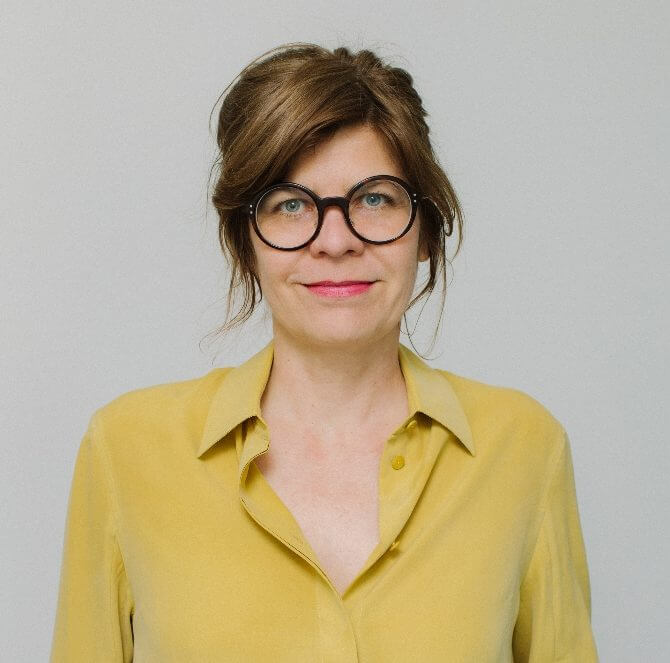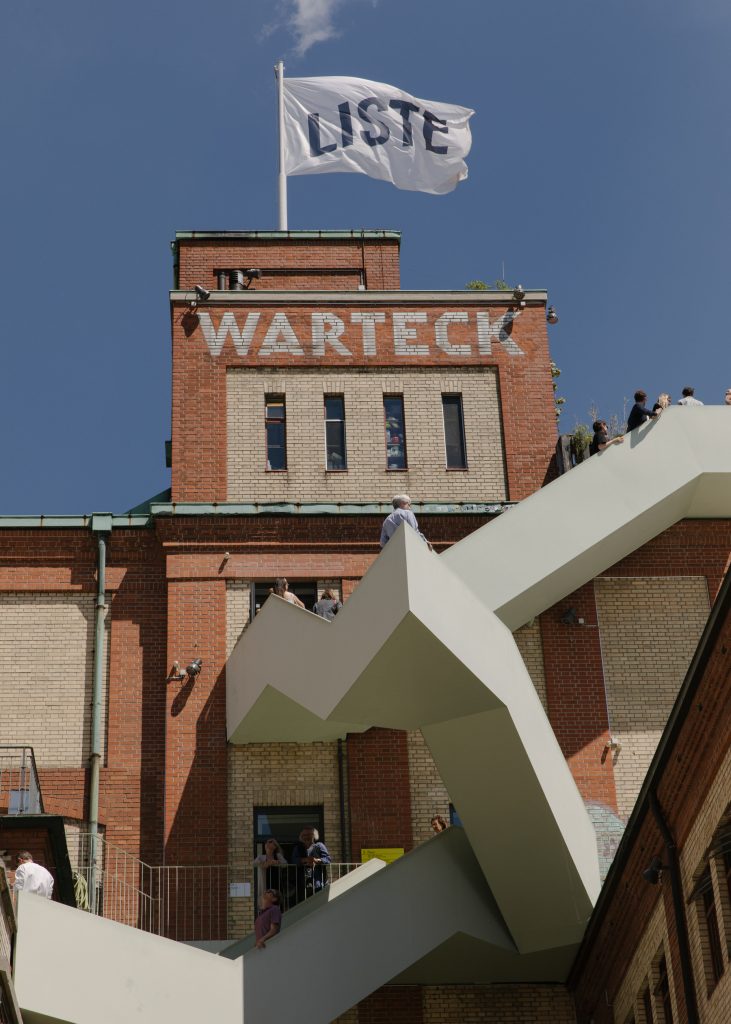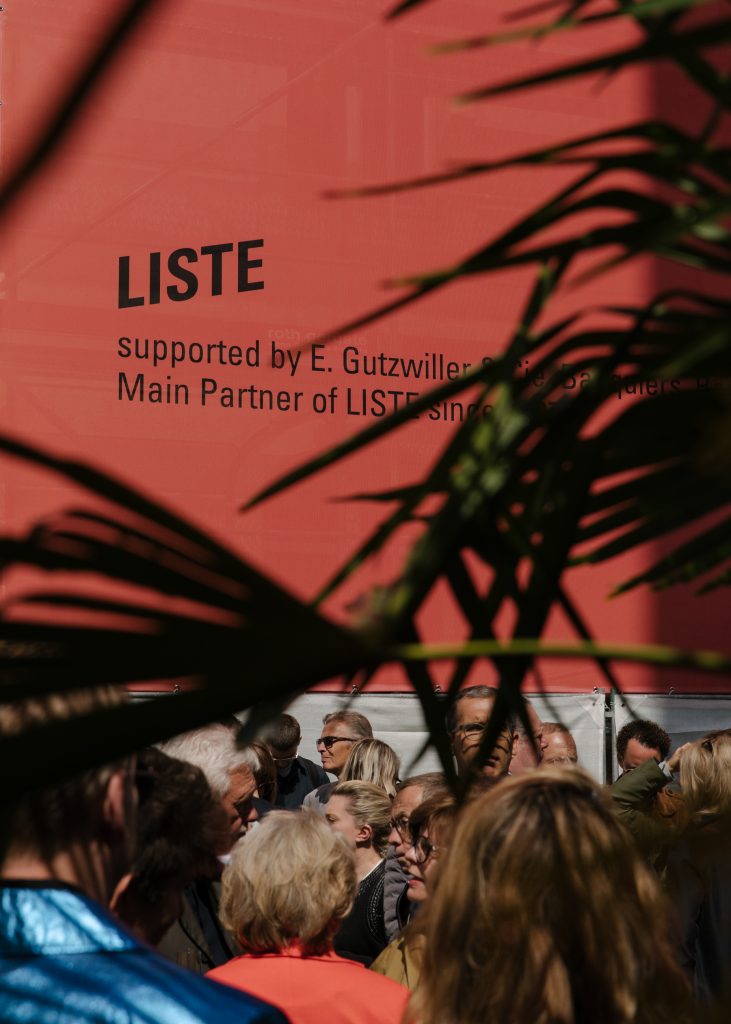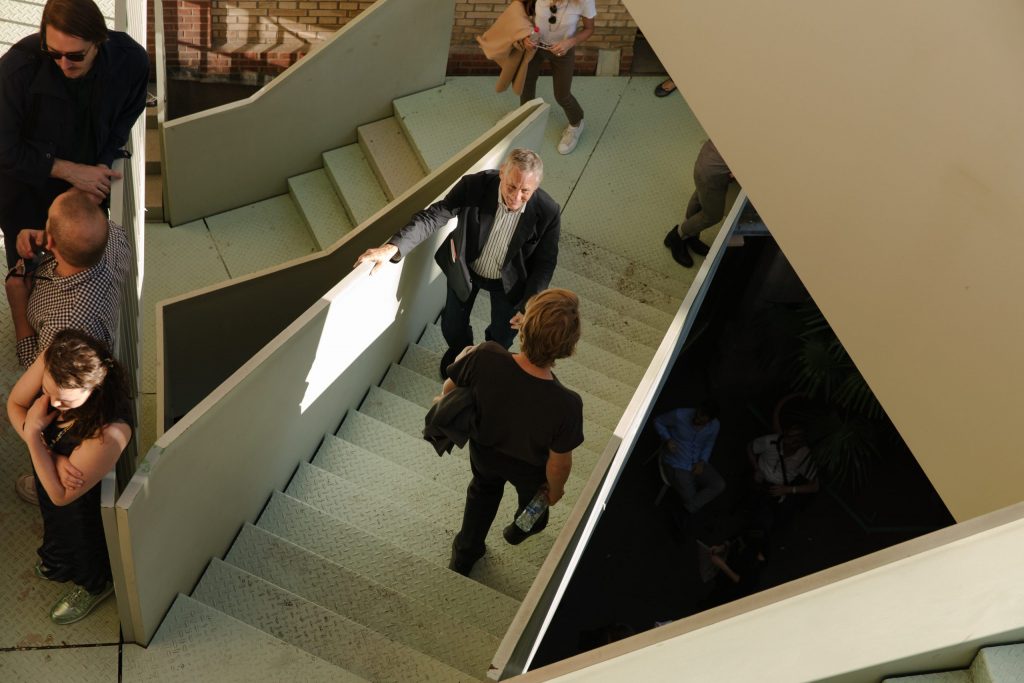A Q&A With Joanna Kamm of LISTE Art Fair Basel

Joanna Kamm is the Director of Liste in Basel (Switzerland), one of the world’s most important contemporary art fairs. Kamm, a former gallerist herself who had previously presented at Liste, spoke to FRONTRUNNER about the fair’s history, her role as director, and how Liste is currently managing the disruption caused by COVID-19. Liste’s 2020 edition is now set to take place from the 14th to the 20th this September.
Could you tell our readers a short history of Liste and its role as an art fair?
Liste was born out of an idea by Eva Presenhuber and Peter Kilchmann in 1995 – both of them now internationally established galleries – who wanted to found a fair that corresponded with the spirit of young galleries and was especially designed for them. In 1996, the first Liste took place with Peter Bläuer as director. At that time, Liste filled a large gap in the market, when there were no platforms for young galleries at fairs, or in sectors of them.

Photo credit: Diana Pfammatter
Participants of the first edition were galleries like David Zwirner, neugerriemschneider, Maureen Paley, Air de Paris, and Massimo De Carlo, who started their international careers at Liste like many other galleries in the following years. Thus, Liste has become the most important international platform for a younger generation of galleries who are introducing new artistic positions to major professionals and art lovers that gather in Basel during the Art Basel week. As well as that, it is a fantastic opportunity for the galleries to meet colleagues from all over the world and build a community that is essential for all the years to come. For a fair, there is a very special atmosphere at Liste, which is less about competition than curiosity, excitement and friendship.
The 2020 edition of Liste will be your second fair as director. What had you learnt from your first year that you will be implementing this year?
My second edition is such a big exception due to Coronavirus, that many things will be different this year from what we’d planned initially. But in general, I learnt from my first year that the concept of Liste works pretty well, and that it should be less about doing things differently, or inventing something new, and rather about using all available resources to bring the exhibited works into focus. We have 47 solo presentations this year and many artists are only at the beginning of their career. Still, there will be a lot to discover and the most important thing for me is to use all of the channels at my disposal to point out the social significance of young contemporary art. At a time when more and more emphasis is being placed on security in all its facets, simplified classifications are gaining the upper hand. I see it as more important than ever to deal with emerging artists who make it possible for us to have new perspectives on our world because they transcend the limits of our own perception.

Photo credit: Diana Pfammatter
There is a very nice example from architecture. The French architects Lacaton & Vassal were asked at the very beginning of their career to redesign an existing park in Bordeaux. For a young office yet to show the world their signature, it’s an exciting project. However, they observed the park for months, and they came to the conclusion that the park as it is, works very well, only the park benches should be repainted and the trees needed treatment. That’s how I feel about Liste, I’m still in the process of observing, but the fair itself works due to the great art to discover. It’s less about big changes, but instead about finding the world’s best young galleries.
Liste has a focus on young galleries. What are some qualities that you look for?
We are very interested in enabling galleries starting out with a strong programme to present that in Basel. I travel a lot and work with a network of people who have great knowledge of the young art scene in certain regions. It is also important for us to research galleries that operate beyond the art metropolises and outside of the Western cultural sphere, in order to be able to present a diverse picture of young contemporary art. Our international committee, consisting of curators, gallerists and artists, selects the galleries under this premise. Ultimately, the quality of the art and the gallery programme is always decisive.

Photo credit: Diana Pfammatter
You share Basel with another art fair, what is Liste’s relationship with Art Basel?
Liste and Art Basel complement each other, both fairs have their own strong profile. Liste is rather the fair you do as a gallery before you might head for Art Basel, with the possible exception of their statement and feature sections. We are happy when galleries that Liste has enabled to show their young programme, and introduce themselves to the international art market, are accepted by Art Basel. At Liste, you grow and at Art Basel you prove that you have established yourself.
As COVID-19 has disrupted most, if not all, of this year’s art world events, how has Liste been managing the crisis?
I think the most important thing at a time like this is to stay flexible and be in very close communication with the galleries, listening to their needs and concerns. At the moment, a vast majority of galleries wish the fair to take place in September. So, if the situation allows us, we will do that. At the same time, we are trying to find as much monetary aid as possible, so that we can support the galleries financially in the framework of their participation at Liste.
 <<<<<<<<
<<<<<<<<Installation view
Photo credit: Diana Pfammatter
We are very thankful to our long-term main sponsor E.Gutzwiller & Cie, Banquiers, for supporting us more than ever in these difficult times, and we are very happy about a donation received by the Stiftung zur Förderung aktueller Kunst Basel (Foundation for the Promotion of Contemporary Art). This support will enable us for the first time to support production costs of the artists. Prior to the pandemic, we were already in conversation with the foundation and had planned to introduce this special support starting next year. However, due to the current difficult situation our galleries and artists are in, they have decided to start their support this year. We are very grateful for this, it’s something very unique for an art fair to support production. Last but not least, we will try to attract as many new members as possible for our ‘Friends of Liste’ circle. The annual membership is only CHF 250 and his contribution goes specifically into the reduction of stand costs. ‘Friends of Liste’ is a kind of crowdfunding that, at the moment, supports 13 galleries.
Post-COVID-19, do you think art fairs will have a larger responsibility to bring together an art world which is currently unable to do so?
The time in isolation has shown us it is very important that there are also digital channels to exhibit and sell art as well as to collaborate with each other. But at the same time, it also becomes even more apparent that the personal experience of art – the meeting in person and a direct exchange of different actors in the art field – cannot be replaced with virtual means.

Photo credit: Diana Pfammatter
Even if fairs, as major events, will be the last ones that can resume normal operations, they will be more important than ever for this very reason. Our responsibility is to help galleries recover from this economically devastating period as best we can, while at the same time providing them with the best possible platform for personal encounters. But we can’t do this alone. All of us, the collectors, curators, critics, have to stick together now and support the artists and their galleries to enable them to continue working. It’s not just an act of generosity, but a necessity to buy art because we need their art, since it leads us to a richer, diverse vision of the world. Solidarity is always about interdependence. It is about having a common goal which should be the preservation of culture.